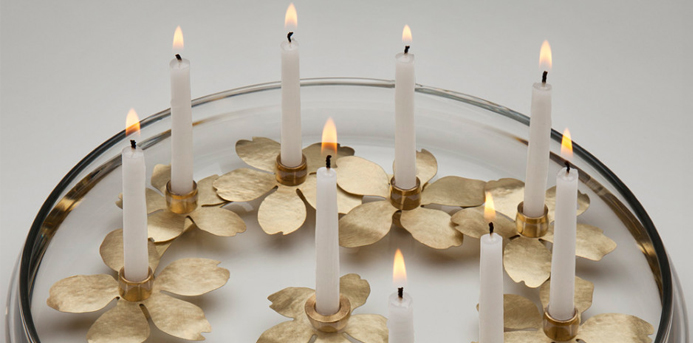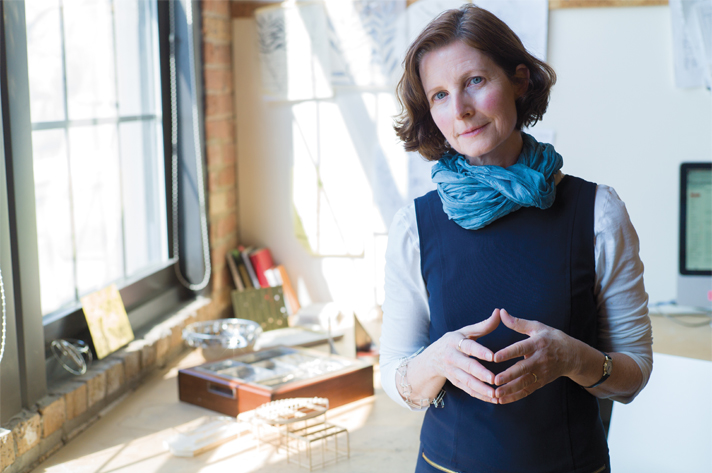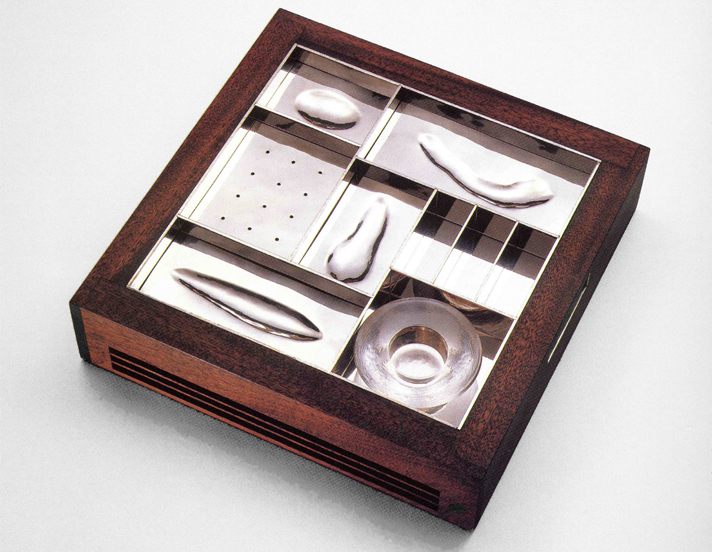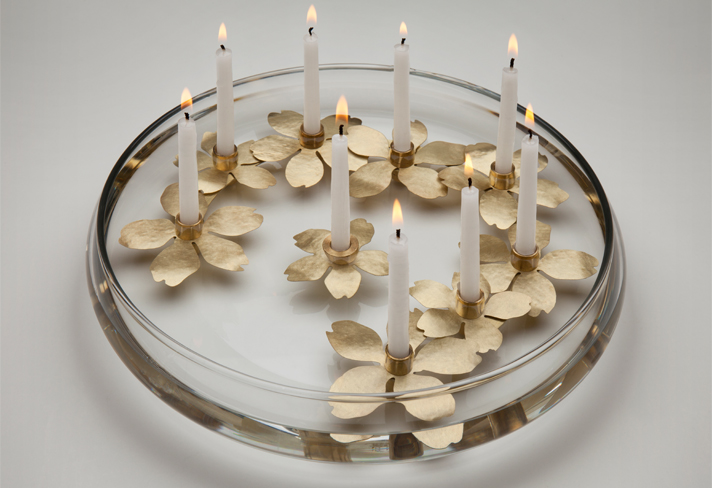This year for Hanukkah, light a menorah that brings new meaning to the Festival of Lights. At Chicago’s Spertus Institute for Jewish Learning and Leadership, you can marvel at (and shop!) a new exhibit titled “Reinventing Judaica,” featuring traditional Jewish ceremonial objects designed to inspire a deeper understanding of their symbolic significance created by Evanston-based architect and designer Amy Reichert.
Fifteen pieces, including menorahs, Seder plates, mezuzot and Kiddush cups (to name a few), are on display in Spertus’s jewel-box front gallery. The exhibit runs now through March 2015.
“For those who already use these objects in their daily lives, I hope to evoke a new sense of wonder in the familiar,” Reichert says. “For those who haven’t thought about these rituals for a long time, I hope to reconnect them to the relevance and beauty of the tradition.”
As a contemporary architect who specializes in historic home renovations, Reichert is used to working with rules and restrictions when it comes to design, and her creative process for religious art is no different. She begins by “excavating” countless biblical and rabbinical texts to find the specifications that ancient craftsmen used to produce ceremonial objects.
“I like to push the envelope, but I like the envelope,” she says.
Reichert describes her artistic approach as “humanist modernism.” Her designs allow the character and natural aspects of materials used in biblical times, such as wood from Israeli olive trees and hammered silver and gold, to breathe new life and symbolism into objects used to physically represent a religious story or ceremony.
Reicherts’s first foray into designing Judaica was in 1995, when she entered an international design competition, receiving second place for a Passover Seder plate.
“I never liked any Seder plates I saw,” she says. “So, I thought I would design one since it is the central prop in the dramatic telling of the story of Passover.”
By using a beautiful wooden square box instead of a circular plate, Reichert created a design that offers as much form as function. It references the Exodus from Egypt with transportable handles on each side and a hammered silver Seder plate on top with fossil-like impressions of the sacred herbs and symbolic foods used in retelling the story of Passover.
The Water Blossom menorah (inspired by candles in a cathedral Reichert toured in France) is one of her most popular, and makes an attractive centerpiece on any holiday table. Created to symbolize the original temple menorah that was made in gold, the menorah features a set of gold, almond-blossom-shaped cups that hold eight candles floating in a circular glass bowl of water that dramatically reflects the light.
“The long tapers in a bath of water allow the candles to just sizzle out, leaving no wax build up to clean,” Reichert says.
Kiddush cups, a recent commission by a family to mark the B’nai Mitzvah of their twin sons, were designed with a “yin-yang” approach, with hammered silver cups set in two geometric olive wood bases designed to fit perfectly together. When separated, the cups represent the story of the Exodus and the parting of the Red Sea.
Limited editions of Reichert’s work can be purchased from the Spertus gift shop or through her online store, though she often takes commissions for mitzvah, wedding or special family heirloom gifts.
The exhibit is free to the public, and is open Sunday to Wednesday from 10 a.m. to 5 p.m., Thursday from 10 a.m. to 6 p.m. and Friday from 10 a.m. to 3 p.m. Spertus is closed on Saturday for the Jewish Sabbath and on Jewish and secular holidays. Spertus is located at 610 S. Michigan Ave. in Chicago, 312-322-1700.




